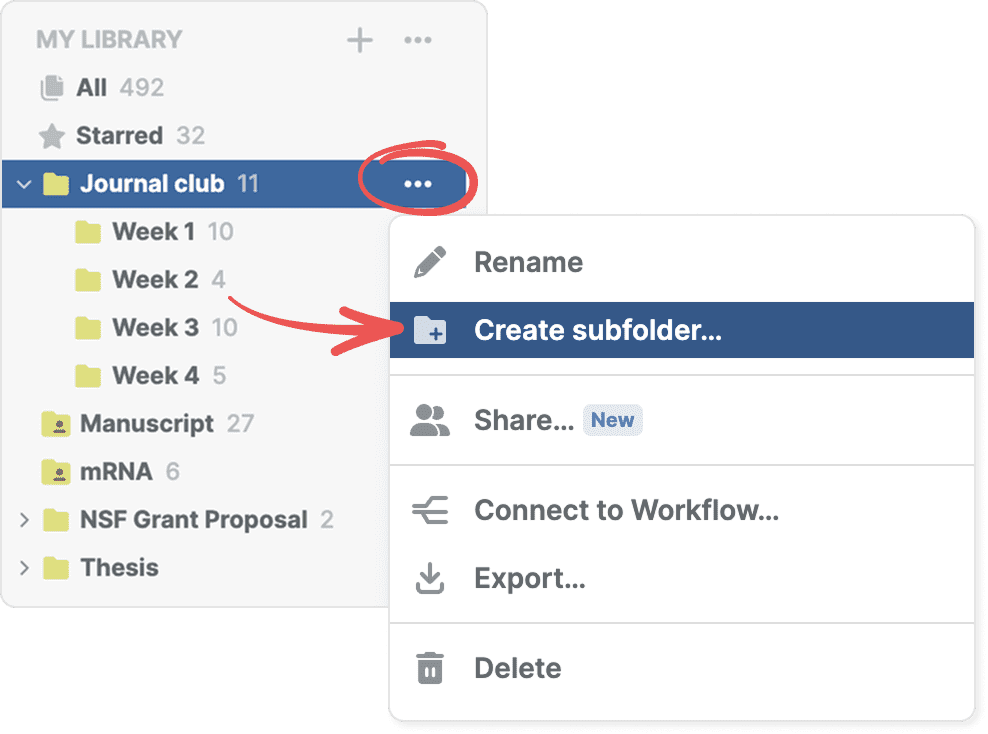Folders and labels explained
You can organize your library with folders and labels. Both folders and labels help you categorize and find references quickly, but they work in different ways and serve different organizational purposes.
General organization strategy
An effective approach is to use folders for broad categories and labels for detailed tagging. For example, you might create folders for different projects or research areas, then use labels to mark references by methodology, status, or importance.
Many users find success with a hybrid approach: create a few main folders for major topics or projects, then use labels extensively for cross-cutting themes that span multiple folders.
Folders

Folders work like traditional file folders, creating a hierarchical structure for your references. They're ideal for organizing references by project, course, or research area. See Organize your library with folders.
Subfolders

You can create subfolders to build deeper organizational structures. For example, a "Dissertation" folder might contain subfolders like "Literature Review," "Methodology," and "Case Studies." To create a subfolder, drag one folder onto another in the sidebar, or use the three-dot menu on an existing folder.
References can be in multiple folders
Unlike traditional file systems, a single reference can exist in multiple folders simultaneously. This means you can add the same paper to both your "Climate Change" and "Policy Analysis" folders without creating duplicates. When you view the reference in either folder, you're seeing the same reference with all its metadata and files.
Labels

Labels are flexible tags you can add to references to mark them by topic, purpose, or characteristic. They’re suitable for themes that span multiple projects. See Organize your library with labels.
Folders vs Labels: What's the difference?
| Feature | Folders | Labels |
|---|---|---|
Structure | Hierarchical (can have subfolders) | Flat (no hierarchy) |
Visual appearance | Appear as folders in sidebar | Appear as colored tags in sidebar |
Best for | Broad categories, projects, courses | Detailed tagging, status, themes |
Multiple assignment | Yes, references can be in multiple folders | Yes, references can have multiple labels |
Organization | Create clear project boundaries | Cross-cutting categorization |
Examples | "PhD Research," "Teaching Materials," "Grant Proposal" | "To Read," "Important," "Methods," "Theory" |
Removing folders or labels doesn't delete references
When you remove a reference from a folder, the reference remains in your library and in any other folders where it appears.
Similarly, if you delete a folder itself, all references in that folder remain in your library unless you choose to trash references in the folder. They'll simply no longer be organized under that folder structure.
This applies to labels as well - removing a label from a reference or deleting the label entirely doesn't affect the reference itself or remove it from your library.